| Zeitschrift Umělec 1999/5-6 >> Every Institution Is a Tool for Violence (An interview with Katarína Rusnáková, the newly appointed director of the National Gallery’s Modern and Contemporary Art Collection at Veletržní palác) | Übersicht aller Ausgaben | ||||||||||||
|
|||||||||||||
Every Institution Is a Tool for Violence (An interview with Katarína Rusnáková, the newly appointed director of the National Gallery’s Modern and Contemporary Art Collection at Veletržní palác)Zeitschrift Umělec 1999/5-601.05.1999 Lenka Lindaurová a Karel Císař | q & a | en cs |
|||||||||||||
|
"An interview with Katarína Rusnáková, the newly appointed director of the National Gallery’s Modern and Contemporary Art Collection at Veletržní palác
By Lenka Lindaurová and Karel Císař, page 5 Slovak curator Katarína Rusnáková was appointed director of the Collection as of August 1, 1999. She was previously working in the position of curator at the Povážská galéria in Žilina, Slovakia. Over the past three years, a total of four people have worked in the position of the Modern and Contemporary Art Collection Director. What state did you find this institution to be in when you arrived early July? When I got here, I intentionally put aside all illusions and prejudice. I entered environment which I expected to be stigmatized with several years of unstable development. I think it is necessary to start working on a better concept and make our activities logical and professional - this is all in line with the overall restructuring of the National Gallery which [in June appointed director Milan] Knížák set to be finished in February 2000. We want to reorganize all the gallery’s activities and create a functional and flexible working environment. I want to believe that Veletržní palác is not a pathogenic zone; if it were to be one and I were only to serve to maintain its operations, I would not be interested in this position any more. I have an idea which I would like to fulfill gradually. I would like the new permanent exhibition to open in April next year. I understand that a large amount of work has already been carried out and it is up to a team of curators and external consultants to open a debate about the intended concept, to brush it up as soon as possible so that the actual realization of the exhibition could start at the beginning of year 2000. The new thing is that the 19th Century collection will be moved to Veletržní palác. Does this mean that the entire collection from the St. Agnes Convent will be moved to Veletržní palác? Yes. Old and Medieval Art Collection will be moved to St. Agnes next year. In conjunction with the upcoming multi-branch permanent collection, the General Director decided to call for proposals for the new 19th and 20th Century collection in order to make it more compact and put emphasis on transition between the two centuries. The collections should not be atomized and there should exist a fluent transition between them. The 19th Century collection includes a number of excellent international art works in addition to pieces by Czech artists, a fact which should attract new visitors. The Palace’s first floor and some of the galleries in the Small Court will remain in use for short-term and alternative exhibitions reflecting the obvious signals such as media, their manipulation, body, flesh, changes of identity, life style themes, advertising, high and low art, etc. All of this requires a lot of work and we need to hire external curators and raise enough money. This means that people should be more creative in all of these areas, they should be using grant policies both here and abroad and contact international foundations. Do you think that incorporating the 19th and 20th Century collections into one is a good decision? Isn’t contemporary art audience quite different from that of the 19th Century? And also, won’t the misfit of the Veletržní palác for exhibition purposes be even more visible this way? The Palace’s layout was originally intended for commercial purposes but since it was adapted for gallery needs [in the 1980-90s], we have to deal with it. I think that the Palace’s architecture may allow for symbiosis with art. As far as combining the 19th and 20th Century collections, I believe that such plurality cannot hurt. I would not put a dividing line between audiences of different centuries, everybody is free to pick what they like. The beginnings of modern art date back to the end of the 18th Century; we also need to look at the 19th Century through contemporary eyes and reinterpret certain approaches and look for interesting contexts. We don’t have to follow closed and rigid opinions. The nice thing about art is that you may surf through the individual periods and look at them from today’s perspective, such as post-historical perspective. Are you planning on using any of the proposals for the new permanent exhibition which have been worked on during the past two years? I am currently reviewing them all and I think that every good idea should be realized. The exhibition should be based on excellent personalities which would be profiled in a way that would create a clear encyclopedia of art, of the individual tendencies and trends. It should not be a disorienting sophisticated model as the permanent exhibition should right from the start provide a certain key for both experts and general public, also foreign visitors should be able to find their way around. A number of people have a problem with the current exhibition as important figures of art are „sliced up“ among many different sections and works by Kupka, Pešánek and Filla, for example, appear in various places within the exhibition. Do you think there are personalities here that would be able to put the permanent exhibition together? Some of the previous efforts of quite respected curators did not end up that great... We just called for internal proposals asking all our curators to participate and we also addressed external curators so that we were able to create an environment of interesting confrontation. The proposals will be assessed and we will work further with the winner of the tender. What specific changes are you planning to implement in the Palace’s organization? The changes are tied with reorganization [of the National Gallery] as prepared by General Director. Related to this will also be structural changes of which I would not like to talk as this issue is still open. I wish to create certain hierarchy in the individual departments and I would like to go back to the model topped with the director of the modern and contemporary collection followed by heads of sub-collections, curators in charge of the collection of painting, sculpture, architecture. We also need to form a collection of intermedia and new media. There should exist a status of an associate (external) curator working on specific exhibition projects on contractual basis. How is your cooperation with [General Director] Milan Knížák? We speak mostly of what we do not like here and what we would like to change. Is there at least one concrete and visible change that we could immediately see even from the outside the institution? People tend to perceive the institution as a monster where nothing has changed over this past decade? Veletržní palác should start living a full life. Its main function lies in the permanent exhibition and alternative short-term exhibitions. This should be accompanied with various other activities and interactive programs. The visitors should be attacked with various events aimed at different professional groups, we want to open a library with an internet cafe. The space of the Palace is not used efficiently enough, there are spaces suitable for jazz concerts, fashion shows, etc. It is necessary to use the cinema here which is not finished yet and rent it to somebody who is willing to invest 50 million crowns (or $1,430,000.00 US). The cinema may also be used as a conference room as well as a projection room for the gallery and general public. We should reassess leases with the current tenants of the Palace. Also, we would like to make space in front of the Palace for exhibitions of objects. We would first like to address older generation of artists, such as Knížák, and later talk to younger artists and international artists. It is interesting that the building’s orientation system has not been solved during the past four years, it is hard for people to find the main entrance to the building and exhibitions are not properly advertised on the facade. When will a cafe or a library be open? Those promises have been made before as well... I don’t understand why this effort has failed. I consider this a matter of prestige that I do something concrete here. The gallery finds itself in a different constellation with professor Knížák being a energetic man who does not like long deadlines during which one gets lost and does not realize anything. We would like most of the changes to take effect during the first half of year 2000. I place a knife on my throat with the deadline I set for myself and many expert employees have already told me that it would not be possible to meet them. [But] it requires higher dynamics and work rhythm, flexibility, searching for new creative approaches, eliminating stereotypes and a large amount of independence and personal responsibility. Do you think you will be able to manage financial problems which might occur while realizing your plans? I hope that the Ministry of Culture will understand the importance of this institution which does not only lie in visiting the gallery but also in cultivating one’s life style. Inordinate consumption leads nowhere. Institutions like galleries should be here to help people find answers to their questions, curators should be able to communicate in various forms. People cannot find their way to contemporary art and expert texts in catalogue are discouraging them. We need to look for ways to touch the general public and present art. We are not working on projects for the elite or close groups of theorists and artists - our work is about communication. It is not just a technical language problem that people don’t understand us abroad. The problem is that we’re often unable to find a common ground at home. Because we don’t know what we want ourselves - that’s not just a problem of the art scene. But there is no environment here in which business people would feel the snobby need to support art. We cannot even expect the Ministry of Culture to understand what they have in Veletržní palác. The only chance is [the Gallery’s Director] Knížák with his ties to the political scene. Nothing would happen the normal way, don’t you think? Other people working in Veletržní palác may be of great help, too. They should start thinking of their company more, be more broad-minded and proud of this institution. When they build their own prestige, they should combine it with the prestige of their own company. I was quite surprised to read some of the works written by curators here: many of them seemed to be more interested in working for other institutions than the National Gallery. I understand, they lacked motivation. I also don’t understand why colleagues should not review each other’s exhibitions, why they should not report on the National Gallery’s plans, why they should not speak about things they need to solve in the media. Do you think it is an advantage for you to come from a foreign country not knowing the relations among people in the Czech art scene? It’s an advantage for me. I can regard Czech artists more independently and I can look at art works through the prism of quality. I don’t subscribe to the idea that we have to look at international art through the eyes of people who have lived under the tough conditions here and we cannot therefore be confronted with the international art scene. I believe there is only one kind of art: good art. It must be able to compete within international confrontation. Do you have any curatorial projects for Veletržní palác of your own? I have some projects at progress abroad but I would like to concentrate on reorganization and system changes here which would lead to defined administration. I am trying to establish an international network so that we may show some projects here but otherwise I identify with many scheduled exhibitions and I want to be integrated into the new permanent exhibition. We are working on an exhibition entitled The End of the World? in the Kinski Palace in which all the collections should be involved. I want to be a good official and a manager and create a platform for conceptual work. I am excited about a project I would like to realize in the future but that has nothing to do with Veletržní palác: it’s an exhibition in a ZOO. I am interested in human identity, animal identity, evil as a Foulcaultian issue. Every institution is a tool for violence and power so I have to be careful no to be self-centered. "
01.05.1999
Empfohlene Artikel
|
|||||||||||||
|
04.02.2020 10:17
Letošní 50. ročník Art Basel přilákal celkem 93 000 návštěvníků a sběratelů z 80 zemí světa. 290 prémiových galerií představilo umělecká díla od počátku 20. století až po současnost. Hlavní sektor přehlídky, tradičně v prvním patře výstavního prostoru, představil 232 předních galerií z celého světa nabízející umění nejvyšší kvality. Veletrh ukázal vzestupný trend prodeje prostřednictvím galerií jak soukromým sbírkám, tak i institucím. Kromě hlavního veletrhu stály za návštěvu i ty přidružené: Volta, Liste a Photo Basel, k tomu doprovodné programy a výstavy v místních institucích, které kvalitou daleko přesahují hranice města tj. Kunsthalle Basel, Kunstmuseum, Tinguely muzeum nebo Fondation Beyeler.
|



















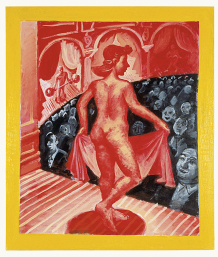




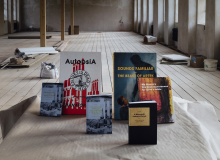
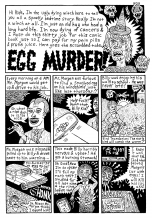
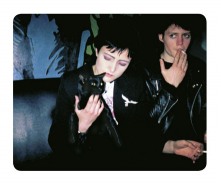
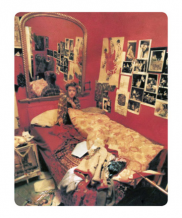


 New book by I.M.Jirous in English at our online bookshop.
New book by I.M.Jirous in English at our online bookshop.
Kommentar
Der Artikel ist bisher nicht kommentiert wordenNeuen Kommentar einfügen